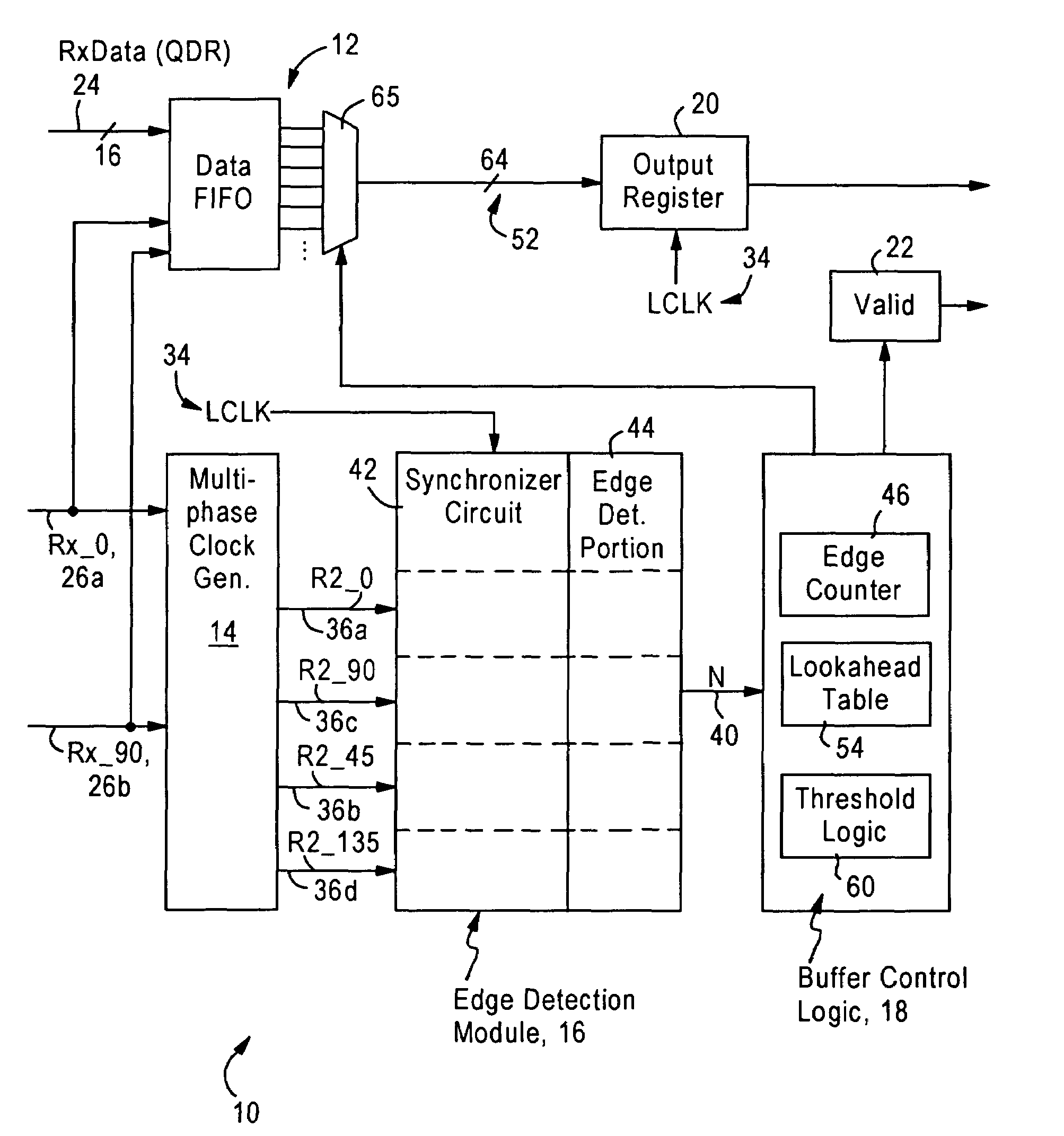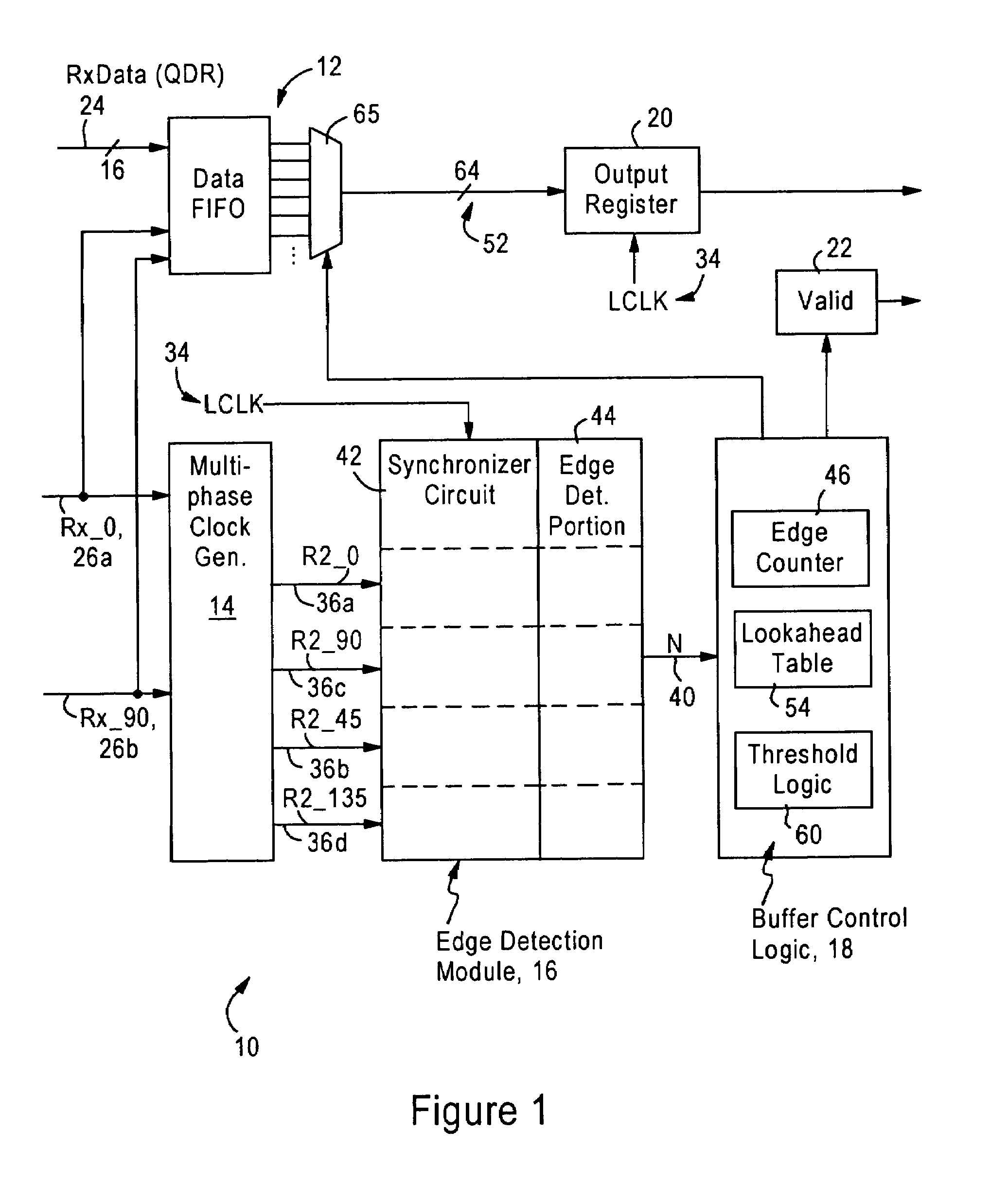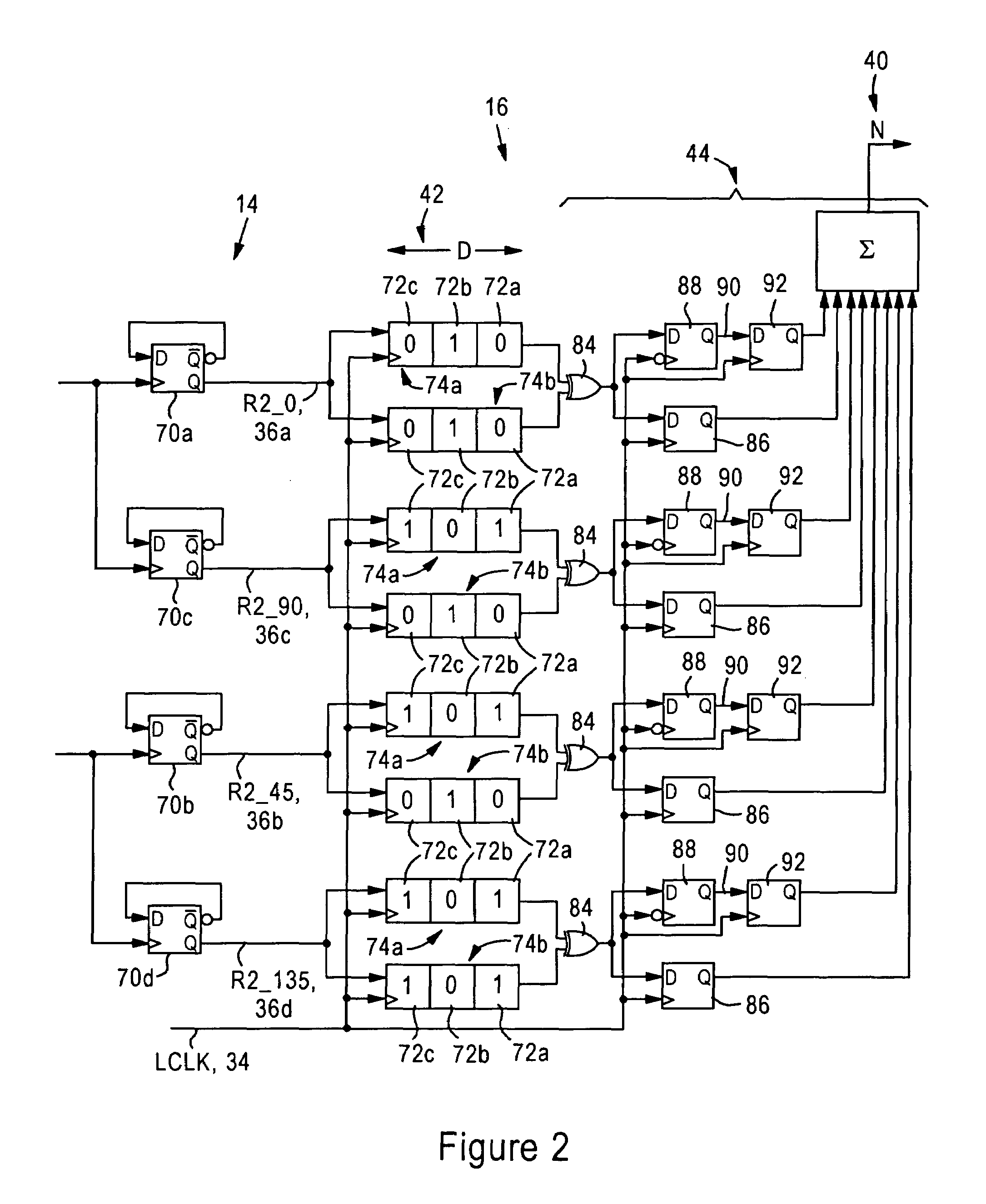Asynchronous-mode sync FIFO having automatic lookahead and deterministic tester operation
a synchronization and automatic lookahead technology, applied in the field of synchronization of data, can solve the problems of inaccurate data, data may not be received and sampled accurately in the receiving device, and the synchronization signal has limited precision in estimating the latency of the synchronizer
- Summary
- Abstract
- Description
- Claims
- Application Information
AI Technical Summary
Benefits of technology
Problems solved by technology
Method used
Image
Examples
Embodiment Construction
[0029]The disclosed embodiment is directed to an integrated circuit, for example a microprocessor or a device that interfaces with the microprocessor via a high-speed link such as a HyperTransport™ link, having a receive buffer circuit configured for outputting latched data signals based on synchronization between receive clocks generated by a transmitting clock domain, and a local clock generated within a receiver clock domain.
[0030]FIG. 1 is a diagram illustrating a receive buffer circuit 10 having a data buffer 12, a multi-phase clock generator 14, an edge detection module 16, and buffer control logic 18. The receive buffer circuit also includes an output register 20 configured for storing a 64-bit buffer entry output from the data buffer 12, and a valid bit register 22 configured for identifying the presence of valid data in the output register 20.
[0031]The First-In-First-Out (FIFO) buffer 12 is configured for receiving high speed data (RxDATA) via a parallel bus 24, for example...
PUM
 Login to View More
Login to View More Abstract
Description
Claims
Application Information
 Login to View More
Login to View More - R&D
- Intellectual Property
- Life Sciences
- Materials
- Tech Scout
- Unparalleled Data Quality
- Higher Quality Content
- 60% Fewer Hallucinations
Browse by: Latest US Patents, China's latest patents, Technical Efficacy Thesaurus, Application Domain, Technology Topic, Popular Technical Reports.
© 2025 PatSnap. All rights reserved.Legal|Privacy policy|Modern Slavery Act Transparency Statement|Sitemap|About US| Contact US: help@patsnap.com



